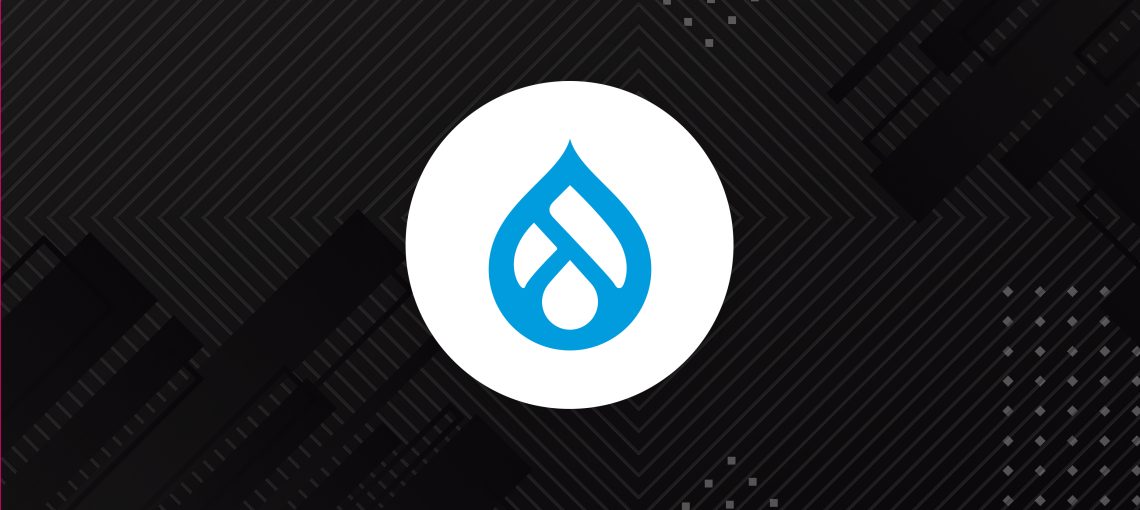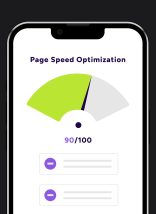As with all major website changes, the upgrade from Drupal 7 to Drupal 10 may be intimidating to plan. Despite the time investment, fully recognizing the benefits of the newest version of Drupal will be well worth your while. Read on to learn more about how upgrading will help your business through increasing efficiency, security, and an improved overall experience for your team.
Primary Benefits of Upgrading to Drupal 10
So why should you upgrade to Drupal 10, rather than staying with Drupal 7 or moving to another platform like WordPress?
Ensure your application is secure.
Drupal 7 is scheduled to reach its end of life in January of 2025. This means it won’t receive security updates or bug fixes after that point. The Drupal Association has discontinued their 3rd party maintenance program for Drupal 7, so this will be your last chance to upgrade!
The Drupal community already did the work for simple migration paths.
The Migrate module has been moved into Drupal 10 core code, and the community has included migration scripts to migrate most Drupal 6 and Drupal 7 configuration and content to Drupal 10. If you were moving to another platform, you would have to develop your new data structures, themes, and migration scripts yourself. With Drupal 10 you can leverage the efforts of the community to migrate your data structures and content with less effort.
Upgrading to Drupal 10 will facilitate your upgrade to Drupal 11.
While the Drupal 7 to Drupal 10 transition requires a migration of configuration and content (because of the extensive re-factoring of Drupal’s core code), the Drupal 10 to Drupal 11 upgrade will not require a migration. The Drupal community is returning to an upgrade-in-place strategy, much like between previous versions.
Drupal 11 will be built off of Drupal 10, with its third-party dependencies updated and some old code removed. This will result in a smoother transition between Drupal 10 and 11.
You may be wondering: why not upgrade to Drupal 8 or 9 first? The biggest reason is that Drupal 8’s end of life was November 2021, and Drupal 9’s end-of-life was November 1, 2023!
What Drupal 7 Problems Will Drupal 10 Solve For Me?
There are many new features in Drupal 10 that will improve both the developer and end-user experience for your application. It’s important to recognize that even if you’re not a developer, the new developer features make it easier to develop and deploy Drupal, which leads to a more efficient process all around.
Three Problems for Admin Users in Drupal 7
1. Issues with Content Editing
One of the most frequent complaints about Drupal 7 is that the content editing experience wasn’t very good. Content editors usually had to edit their content on a form, and couldn’t really see how the content looked on the page before publishing. There was a preview function, but it didn’t always work correctly or required a lot of additional development to make it useful.
Drupal 10 seeks to improve the content editing experience by introducing a few new features. The first is Quick Edit, which allows editors to change content inline on the page they are editing, rather than going to the edit form every time. Another is Layout Builder, which allows users to easily change the layout for a page without editing its template in code. The third is by moving the CKEditor WYSIWYG editor into Drupal’s core code, which makes it easier for editors to format text without knowing how to code.
2. Issues With Media
Another complaint about Drupal was its handling of media. Drupal’s solution for media management was previously cobbled together from a number of modules developed by the Drupal community. While there were some popular solutions, how to implement media management was left up to the individual site builder or developer, which led to a lot of confusion.
Drupal 10 adds a more comprehensive media management solution in its core code that allows editors to create and re-use media content around Drupal. Drupal 10 even allows editors to embed Drupal-managed media into HTML text fields, which has been a much-requested feature for years.
3. Issues with Moderation and Workflows
Similarly to the media solution, the solution for content moderation and workflows were usually cobbled together from contributed modules. Drupal 10 contains the Workflows and Content Moderation modules, which provide a more tightly integrated moderation experience to Drupal’s content. Drupal 10 also introduces the concept of Workspaces, which are copies of the live site that allow developers and content editors to try out their changes in a separate environment and move the changes to the live site when they are ready. The Workspaces module is experimental for now, but should be declared stable by Drupal 11.
Four Problems for Developers in Drupal 7
1. Issues With Drupal’s Steep Learning Curve
Drupal has always had a reputation of being hard to learn as a developer because it has so much custom code and therefore a steep learning curve. Additionally a lot of the most popular functionality was provided by modules contributed by the community, which developers had to know about to use and had the potential to lose support over time due to being maintained by open source contributors. Drupal’s data structures were also implemented inconsistently, which led to developer confusion about how things were implemented.
Drupal 10 addresses the problem of custom code by re-factoring much of the code to use 3rd-party libraries with a wider knowledge base. The biggest example is that some of the previous custom functionality has been replaced by the Symfony framework. Drupal 10 also uses Composer for dependency management, rather than simply downloading core code and contributed modules from drupal.org.
Drupal 10 also moves some of the more popular and important contributed modules into core, which has a more stable contributor base and therefore lessens the risk of these important modules becoming abandoned. The most notable examples are the Views, Migrate, Internationalization, CKEditor, and Bean modules.
The inconsistency of the data in Drupal 7 has also been addressed by making more things “entities”, which are data structures which have common methods for working with them and which can be configured in predictable ways. This helps developers better understand how to work with Drupal data and cut down on specialized, Drupal-specific knowledge required to develop with Drupal.
2. Issues With Deployments
Prior to Drupal 8, deploying configuration among environments was a pain and required shuffling databases around or required contributed modules like the Features module. Drupal 8 introduced the configuration management system to combat these problems and it continues to be used in Drupal 10. Developers can export site configuration to files and check them into a source code repository. Then they can import them into different instances of the site to make deployments easier and more testable.
3. Issues With Theming
Drupal 7 (and prior versions) were designed as a web content management system before the popularity of smartphones and tablets, so it wasn’t designed with responsive web design in mind. Responsive best practices that required back-end support had to be implemented by custom code or by contributed modules.
Drupal 8 added the Breakpoint and Responsive Image modules. The Breakpoint module allows developers to make modules and themes aware of each other’s breakpoints. Responsive images allows developers to tell Drupal to generate different image sizes for each breakpoint, and load those images selectively in the browser. Each of these modules helps developers make great-looking and usable sites in Drupal 10 as well.
4. Issues With Web Services
Drupal was also designed to build browser-based experiences. In the years since, building REST-based services became more popular by developers, and developing them in Drupal required a lot of custom code or by adding contributed modules.
Drupal 10 has built-in support to output its data in formats other than HTML, which allows Drupal more flexibility. Drupal 10 allows developers to integrate with front-end frameworks like React and Vue easier than before, and allows users to follow a COPE (Create Once, Publish Everywhere) mindset.
Start Your Drupal 10 Upgrade Today
Drupal 10’s new features make many improvements for developers, content editors, and ultimately end-users. While the effort of a Drupal 7 upgrade seems heavy at first, the benefits can more than make up for it in developer and user experience. Now is the time to consider moving your site to Drupal 10! Visit our Drupal 10 page to learn more and get started with a free Drupal Migration Audit from our experts.







